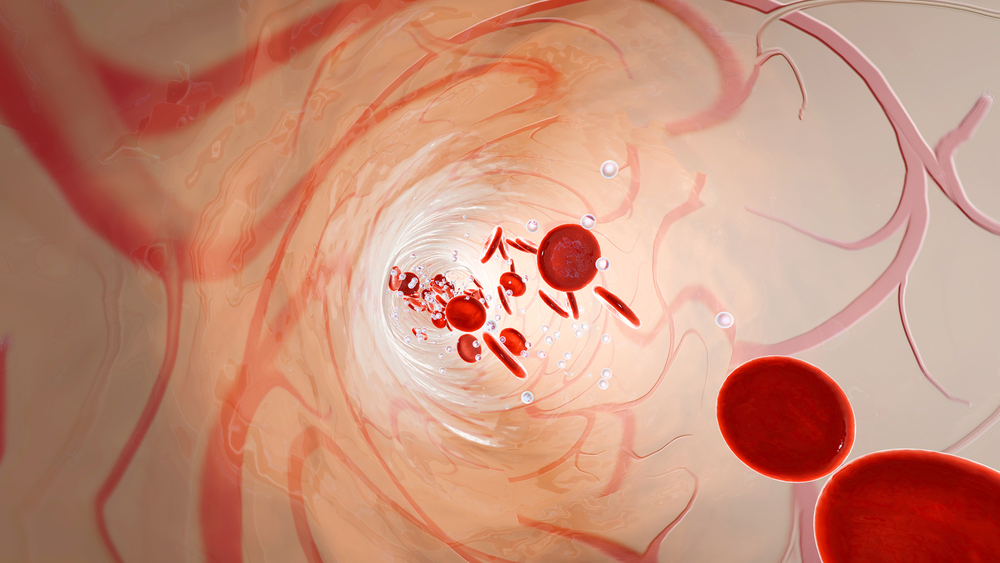Tysabri Affects Immune System Beyond Known MS Target, Study Finds
Written by |

Lower levels of pro-inflammatory immune signaling proteins were found in the blood of people with relapsing-remitting multiple sclerosis (RRMS) treated with Tysabri (natalizumab) and were associated with fewer relapses and less disability, a study has found.
The findings show Tysabri affects the immune system beyond its known target and support the use of the immune signaling protein interleukin-17 (IL-17) as a biomarker for disease activity and progression, the researchers noted.
The study, “Clinical Immunological Correlations in Patients with Multiple Sclerosis Treated with Natalizumab,” was published in the journal Brain Sciences.
Tysabri, manufactured by Biogen, is an approved RRMS therapy that works by stopping immune cells from entering the central nervous system (CNS, comprising the brain and spinal cord) before they can attack the fatty coating on nerve fibers (myelin sheath) and cause MS.
Ordinarily, for immune cells to access the CNS, they interact with a protein complex found on the surface of cells that make up the blood-brain barrier — a selective border that regulates the entry of cells and molecules into the brain.
Tysabri is an antibody designed to recognize and bind to this protein complex, blocking immune cell entry in the CNS. However, how Tysabri affects the immune system outside the CNS (called the peripheral immune system) is unclear.
To address this question, a team led by researchers based at the University of Medicine, Pharmacy, Science and Technology of Targu Mures, in Romania, collected blood samples from 60 RRMS adults treated with Tysabri to analyze levels of pro- and anti-inflammatory immune signaling proteins known as cytokines.
The study included 39 women (65%) and 21 men (35%) with a mean age of 38.1 years, already treated with Tysabri or about to start (treatment-naïve). Blood samples were drawn at study start (baseline) and after a mean interval of 6.96 months, and were also collected from 33 age- and sex-matched healthy individuals who served as controls.
At baseline, compared to controls, MS patients had significantly higher levels of the pro-inflammatory cytokines interleukin (IL)-23 and IL-31.
Among those with MS, there was a significant decrease in the levels of pro-inflammatory cytokines IL-31, IL-17, and TNF-alpha after treatment with Tysabri compared to baseline values.
A longer treatment duration correlated with lower levels of IL-23, and a longer disease duration was associated with lower levels of IL-23, IL-31, IL-17, and IL-1-beta (also a pro-inflammatory signaling protein).
Longer duration of disease positively correlated with higher IL-33 levels, which has both pro-inflammatory functions as well as protective properties.
In the year before the study, a higher number of relapses occurred in patients with less TNF-alpha and sCD40L, a protein associated with various autoimmune diseases. More relapses during this time also positively correlated with higher IL-17 and IL-1-beta levels. Over the study period, more relapses correlated with higher baseline IL-17 levels and lower IL-33 levels.
MS patients who did not have relapses during Tysabri treatment had significantly lower initial serum IL-17 values than those who experienced relapses.
Participants whose disability worsened during the study, as measured by higher expanded disability status scale (EDSS) scores, had significantly lower initial and final IL-33 values compared to those with either a lower EDSS score or no change.
The EDSS score also increased (meaning greater disability) in those with significantly lower baseline IL-17 values than patients whose EDSS score decreased (less disability). Moreover, EDSS scores increased in patients with a significantly higher initial serum value of IL-1-beta compared to those whose scores decreased or remained stable.
A comparison of before and after treatment found a significant decrease in IL-17 values in patients with less disability. For those with a stable EDSS score, there was a significant decrease in TNF-alpha. Also, a significant reduction in IL-31 was found in participants whose EDSS scores were stable or decreased.
The concentrations of IL-31 and IL-1-beta significantly decreased relative to the duration of the treatment, with patients who began Tysabri at baseline (treatment-naïve) showing the least pro-inflammatory cytokine decrease compared to those treated for one to 12 months and 13 to 24 months.
“These results suggest that treatment with [Tysabri] influences the peripheral immune panel by significantly decreasing pro-inflammatory cytokines,” the researchers wrote.
Finally, a comparison of baseline and final cytokine values within the treatment-naïve group found a significant decrease in IL-17, IL-33, and IL-31 after about six months of treatment.
“The results of our study reinforce that the [mechanism of action] of [Tysabri] is not as simple nor clear as it was intended when the molecule was created,” the researchers wrote, as Tysabri can also induce changes in “the peripheral levels of pro and anti-inflammatory cytokines in MS patients.”
“Low levels of pro-inflammatory cytokines under [Tysabri] treatment were associated with favorable clinical outcomes,” they added.
Overall, based on the results, “IL-17 can be used both as a biomarker for disease activity and disease progression in [Tysabri]-treated patients,” they concluded.





